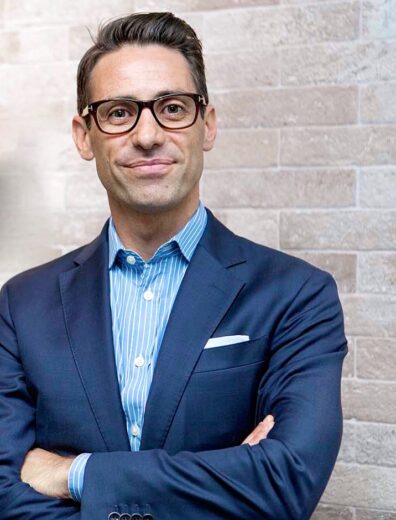Imagine your business is suddenly – and unpreparedly – inundated with calls and sweeping requests.
That’s the exact scenario – and real-life business crisis – that played out in the travel insurance industry due to the global COVID-19 health pandemic. Literally, hordes of people needed instant assistance – and fast – with complex calls that required intricate travel rearrangements.
The perfect storm of customer expectations
Yet, the travel insurance industry wasn’t at all prepared for this ‘perfect storm’ of customer expectations on such an unprecedented scale and in the face of a major health and economic crisis. In fact, many providers in the space didn’t have call deflection technology in place in order to deal with 90% of the calls.
What’s more, this failure on the CX front wasn’t unique to any one provider in the travel and insurance space. Typically, many providers in this space still have outdated flight booking systems, legacy processes or long-in-the-tooth infrastructure. For many, working from home when COVID-19 hit wasn’t even an option.
Certainly, this ‘CX mayhem’ on a grand scale – and high-level problem – couldn’t have hit a more soon-to-be battered industry. In fact, the travel industry and travel insurance market has been one of the hardest hit industries due to the pandemic – the impact so unprecedented that the plummeting numbers scared even the most eternal optimist.
Market destabilization and ongoing uncertainty from the global pandemic seem to cause disruption to the industry due to snap global travel bans, continual travel restrictions and repeated lockdowns.
Indeed, the travel numbers have been eye-opening. According to Tourism Australia, international visitation dropped by 60.7% for the year ending October 2020 compared to 2019.
Light at the end of the tunnel
Fast forward to 2021, and the numbers tanked even further. According to the Australian Government’s Department of Infrastructure, Transport, Regional Development and Communications, passenger traffic in September 2021 has decreased 98.8% compared to 3.5 million recorded in September 2019.
Despite the gloomy statistics, and with some restrictions easing, there’s a light at the end of the tunnel – an onramp to success and a pathway forward to ‘reinvigorate and revitalize’ the customer experience in the travel insurance world.
So how can travel insurers not repeat some of the CX mistakes of the past – and be better prepared for the future? Simply put, many providers are turning to the power of collaborative and connected technology in a bid to deliver remarkable customer experiences from the cloud.
Cover-More pivots to a new CX future
Take Cover-More (Part of Zurich Insurance Group), for example, which reflected on its journey throughout the pandemic and decided to pivot the customer experience, thanks to the launch of the Webex Contact Center across its entire global customer service network – a move that’s already saving 30% of its operating costs year-on-year.
According to Group CEO Cara Morton, the company’s first priority when the pandemic hit was to get travelers home. “Then we immediately pivoted to the future,” she said, and asked, “What do we need to do to come back stronger in travel? – and that really started with the customer.”
With CX at the forefront of everyone’s mind today, the Webex experience is all about offering an Omnichannel experience and orchestrating digital channels. According to James Hill, Cover-More Global Manager, Infrastructure & Cloud, the company needed to ‘think outside the box.’
Let’s face it: Today’s customers don’t only want the ability to make a phone call and talk – they want digital options. Therefore, companies need to offer ‘generational preferences’ when providing customer communications – and also deliver self-service capability via mobile and digital automation.
“Customers want an Omnichannel experience – and for the company to engage with customers on their terms. They want to email us, use SMS, chat, and use Facebook. Webex gives us that ability to have that discussion with the business on how we’re going to better service our customers,” Hill said.
What’s more, Webex is intuitive, offers real-time global reporting, and data analytics. “We never had metrics beforehand. It’s giving us a different ability to look at the data, in terms of where the customers are coming from, and essentially how we’re going to better service them.”
Watch the video to learn more:
Creating empathy and personalization
But it’s more than just listening to customers. It’s about creating empathy for people and personalizing the customer experience through the power of enhanced intelligence and data.
In that vein, companies need to meet customers where they are, respond and communicate in the ways in which they want to connect and understand the journey they’re on.
Certainly, the latest contact center technology is changing the game – offering an Omnichannel reality that helps eliminate fragmented customer experiences that still rely on a siloed approach and demand repetitive requests for customer authentication.
So what’s the trick? The key is to leverage the data – break down the silos – and offer contact center agents a single picture of the customer’s journey in order to amplify the experience and create positive moments – and aim to deliver ‘first-call resolution’’
Undoubtedly, travel is very personal and very emotional – so contact center technology needs to help companies build empathy, understand the customer journey, anticipate their needs (by consolidating messages across multiple channels), and foster deeper connections.
If the pandemic has taught us anything, it’s that people crave connections in both the work front and their personal lives – and need the help of collaborative technologies to help them achieve stronger bonds and optimal performance.
Learn more





